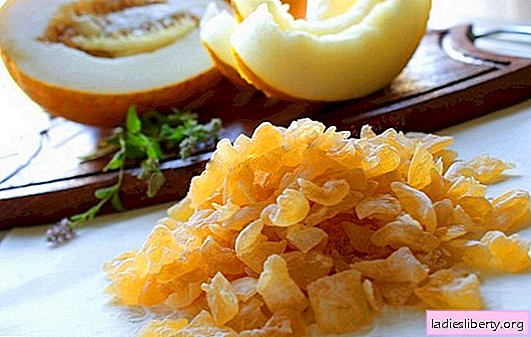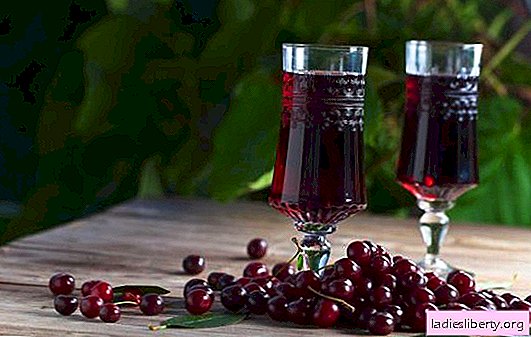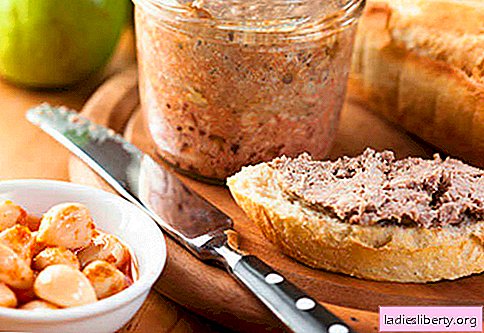
Candied fruit lovers, standing at the window with bright glazed fruits, are often guided by the wrong considerations when making a purchase decision.
Why? Let's get it right.
Take a close look at the packaging. In it you can see bright salad or bright red cubes. Think it's candied kiwi or strawberry? You are mistaken.
Most likely, this is citrus, or pineapple, or another fruit that can be easily dried or glazed. Candied fruits are not made from kiwi; strawberries, when dried and glazed, become brown. A variety of substitutes are sold under the guise of these fruits, soaked in food colors, and it will be very lucky if the seller paints pineapple instead of kiwi and not cheap vegetables, from which you can also make candied fruits, giving them the right color and the corresponding smell.
Try to dip such candied fruits in a glass of hot water, but get ready for unexpected effects: dyeing the water in different colors, floating on the surface of flakes of unknown origin. Finally, purchased candied fruits can completely dissolve and disappear, because gelatin tends to dissolve in hot water.
This begs the classic question, what to do? If you really like candied fruits, then there is only one way out: you need to cook candied fruits from melon at home. And not only from melon!
Both watermelon and orange peels are suitable, everything that turns out to be useful and tasty. Let this be a very troublesome task, but the work will be rewarded in full with really useful preparations, in which there is neither chemistry nor deception.
Candied melon at home - the basic technological principles
In order to avoid mistakes and annoying misunderstandings during the cooking process, you need to carefully study the technology of industrial preparation of candied fruits, as applied to home conditions, to understand a little about the biochemical properties of fruits, in particular - melon. In a word, to make it not worse, but better than in the store. The main thing is to understand how this is obtained at the molecular level. Do not be afraid, this is not difficult.
Candied fruit - Dried fruits glazed in sugar. More specifically, drying is the last step in their preparation. First, fruits or vegetables are boiled in sugar syrup, gradually increasing its concentration. This is done in order to reduce the content of cell juice of fruits to a minimum content. How it works?
Sugar syrup - a denser liquid mass than juice. Therefore, during heating, it penetrates inside the fruit, displacing the juice. The process of replacing fruit juice with a denser mass containing a minimum amount of liquid. In addition, after cooling, sugar crystallizes again, and pieces of fruit become denser. This whole process is nothing but boiling jam, but the initial stage.
Unlike melon jam, in which slices are stored in syrup, future candied fruits are extracted from it, dried, and then again immersed in syrup, even more dense than during the first cooking. Again, a substitution process takes place, and again, drying.
Important:
Prepared pieces of fruit should be lowered into boiling syrup. Therefore, the melon must first be blanched and cooled. Juice boils faster than syrup, and boiling juice prevents the penetration of syrup into the intercellular space of the fetus. For the same reason, the process of cooking fruits in syrup must be repeatedly interrupted, each time immersing the chilled slices in a thicker syrup.
Fruit blanching is necessary in order to maintain the integrity of the fruit. In this case, part of the fruit juice passes into the water, and fiber is compacted, changing its structure; at the same time, in the process of blanching, the intercellular space expands, which facilitates the access of boiling syrup inside. Blanching time is 4-6 minutes. In production conditions, burnt alum is added to blanching water. This technique can be used quite well at home, but not for melon and citrus fruits: these fruits are blanched in plain water.
It is difficult to count how many times you need to boil and dry. Everyone chooses fruits at their discretion, and they have a different degree of maturity, density, each cuts fruits in different ways (large or small). Even a variety is important in the processing of fruits, because the structure of fiber in each variety is usually different. Therefore, the question of how many times you need to boil and dry candied fruit from a melon at home, decide on an individual basis, and you need to focus on the remaining moisture, which should be no more than 20%. True, too much fruit is not worth it.
If you want melted candied fruit at home to be as bright as on the shelves of a supermarket, you can always color them yourself, but using natural food colors: currant juice, beets, carrots, strawberries, spinach, blueberries, saffron or turmeric powder (Indian saffron). Just add these ingredients to the syrup when cooking. To add flavor to candied melon at home, you can use spicy spices, fruit extracts.
There is no doubt in the benefits of such candied fruits. Just do not get carried away - it’s harmful to consume a lot of sugar, but otherwise candied fruits retain all the beneficial properties of the fruits from which they are prepared.
1. Candied melon at home - a classic recipe
Composition:
Melon (pulp) 2.0 kg
Citric acid 3 g
or lemon juice 300 ml
Water 800 ml
Sugar 2.4 kg
Lemon zest (optional)
Cooking:
For candied fruit melons of technical ripeness are suitable, even if they are not sweet. The pulp should be dense. Cut it and blanch in boiling water. Chill.
Make syrup from water and sugar. Acid should be added only at the last cooking in syrup. In medium-boiling syrup, lower slices of blanched melon and cook on low heat for no more than five minutes, remove the dishes from the stove. Throw the melon slices into a colander, let the syrup drain. Lay the pieces on the prepared sheet. They can be dried in the oven, heated to 40-50 ° C, for 4-6 hours, or in the open air, for 12 hours. Avoid drying in direct sunlight. It is desirable that candied fruits lay on a draft and were protected from dust, insects.
Repeat cooking and drying, achieving the desired consistency. For the last time add acid to the syrup, zest - the melon is very tasty with sourness.
2. Candied melon at home - melon in coconut
Composition:
Coconut flakes 100 g
Melon (pulp) 1.0 kg (net)
Lemon juice 300 ml
Water 400 ml
Sugar 1.3 kg
Operating procedure:
The cooking sequence of candied melon at home is described in the classic recipe (see above). The difference between the first and second cooking method is to create a "highlight". During the last cooking, instead of lemon peel, add coconut flakes to turn candied fruit into unprecedented exotic fruits.
3. Candied melon at home - melon peels in orange syrup
Product Composition:
Sugar 1.3 kg
Melon peel 1.5 kg
Oranges, red 1.0 kg
Cooking:
Choose dense melon fruit, in the stage of technical ripeness. The pulp can be eaten or made jam. Wash and cut the peel. Cut it into slices or long rectangular slices. Blanched prepared pieces in boiling water for 4-5 minutes. Flip through a colander and refrigerate.
Remove the zest from the oranges with a fine grater, and then squeeze the juice from the fruits. You should get about 0.8 liters of juice. Put the zest in a container - you need to add it with syrup at the last stage of cooking candied melon at home. Pour the juice into a non-stick saucepan, add 800 g of sugar, and boil the orange syrup on the smallest heat until “medium string” (the syrup should be thick enough not to spread).
In boiling syrup, dip the chopped melon peel and boil for 5-6 minutes. Remove the slices, let them drain, lay in one layer on a baking sheet lined with foil. Preheat the oven to 40-50 ° C. Maintain the set temperature in the oven for 4-6 hours. Do not close the door. Then turn off the heat and leave candied fruit until the next day. On the second day, boil the syrup in which the candied fruit was prepared to a thicker consistency, dip the dried slices into it and repeat the whole process of the previous day. At the last cooking of the syrup, add orange zest to it, and vanilla if desired.
After 3-5 days, transfer the dried fruits to a jar and close them tightly.
4. Candied melon at home - a fruit kaleidoscope
Composition:
Juice, raspberry 200 ml
Saffron (or turmeric) 2 g
Blueberry Juice 250 ml
Melon (without peel) 3 kg
Oranges 0.7 kg
Spinach (fresh or frozen) 0.5 kg
Citric acid 15 g
Water 400 ml
Sugar 2.6 kg
Peppermint extract 5 ml
Order of preparation:
To make colored candied melon at home, you will need fruit syrup with various additives. The syrup will have to be prepared separately, in different dishes, to get the desired color. All other operations for making candied melon at home are similar to previous recipes.
Raspberry syrup (pink color):
Combine the purified raspberry juice with 300 g of sugar. Cook like regular syrup to medium consistency. During the cooking process, do not forget to remove the foam to make the syrup transparent.
Similarly, prepare syrup from blueberries (blue color), Orange juice and zest (orange color). Sugar add 100 - 150 g more than the volume of juice: when cooking candied fruit, the syrup will absorb the juice of the melon and become less dense. Therefore, it is better to add sugar immediately in a larger volume in order to maintain the necessary consistency. When boiling fruit syrup, the juice changes color. At the last cooking, add a pinch of citric acid to each type of syrup: it will give a brighter, more saturated color, and candied fruit will be covered with glossy glaze and will look like candy.
To get a yellow color, brew saffron in boiling water, strain and boil the syrup, adding sugar. Before cooking, add vanilla, lemon zest or other flavors if desired.
To make green syrup, chop the spinach and squeeze the juice under the press. Add boiled water to a volume of 250-300 ml, add sugar, boil the syrup until tender. After cooking, add mint drops for flavoring.
Cut the melon at random, in small pieces, divide according to the number of options for the prepared syrup and cook candied fruits, as usual.
5. Candied melon at home - a real honey melon
Product Composition:
Melon pulp 1.5 kg
Buckwheat honey 700 g
Citric acid 20-25 g
Cooking method:
For the recipe you will need two small melons: one is very ripe and soft, the other is a bit unripe.
Grind the ripe melon, and squeeze the juice through cheesecloth, folded in several layers. Cut the second fruit, denser, into slices - cook candied fruits from it.
Boil melon juice until the volume is reduced by 5 times. Combine with honey and cook a thick syrup. Always remove foam during cooking - the syrup should be transparent.
Next, prepare candied fruits, according to the technology described in the basic technological principles.
6. Candied melon at home - an unusual recipe
Product Composition:
Watermelon juice 400 g
Sugar 800 g
Melon 2.5 kg
Cooking:
Filter ripe watermelon flesh until transparent. Add sugar to it and boil the syrup, constantly removing the foam.
In this syrup, cook melon candied fruits, as described above, in recipes.
Candied melon at home - useful tips and tricks
- From the pulp of a ripe, but dense and very sweet melon, candied fruit can be prepared without the use of sugar. Cut thick pieces of pulp, put them in a pan (preferably in a slow cooker) without water and simmer under a closed lid. Five minutes later, discard the fruit through a colander. Lay the pieces on a baking sheet, and leave to dry at room temperature. Drain the juice in a separate bowl. Stew the cooled pieces of melon again, the same amount of time. Drain the juice again. After the third time, pour all the separated juice into a saucepan and cook until the syrup is thick. Put slices of boiled melon in boiling melon syrup and bring to a boil. Repeat this operation the next day. Dry the candied fruit and put it in a jar, with a tight-fitting lid.
- Candied fruit will make wonderful decorations for cakes, pies, desserts. If you like the oven, then when preparing candied fruits, think in advance of the shape of the cut, which will be useful later, when decorating. Melon can be cut into curly notches for cookies, or use knives for carving. These will be ready-made decorations that can only be put on the surface of the fruit cake.











